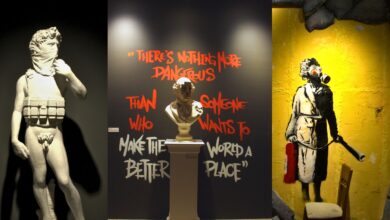Debunking the Stereotype: A ballerina shares her story
 Christina Varvis
Christina VarvisBallet is a graceful and captivating art that is often associated with anorexia, cut-throat competition, and unreasonable expectations. Portrayals of ballet in film and television continue to emphasize this stigma. However, long time ballet dancer Elya Hunt wants to debunk these inaccuracies and show the truth behind the controversial art form.
Hunt started her ballet journey at the age of three. Now twenty three, she is currently dancing with the School of Alberta Ballet, Edmonton Studios. This is the most intensive she has been with ballet, as she is currently working on her Advanced 2 Cecchetti examination — a ballet method consisting of a rigorous syllabus formed by Enrico Cecchetti in the late nineteenth century. Through two decades in the ballet world, she has had tremendous amounts of experience, not only with the dance but with the stereotypes that surround it.
“I think the stereotype is pretty blown out of proportion,” says Hunt. “When Black Swan came out years ago, people kind of saw every dancer as a crazy neurotic person.”
She describes ballet as a competitive art form with limited jobs, which is likely the cause of the “every dancer for themself” mentality. With that being said, Hunt doesn’t feel it’s as common as people think.
“You always get the odd person who takes it too far and is a little bit too cut-throat, but most dancers I’ve met are completely sweet and awesome people who just want to share what they have with the world and encourage other people to do that, too.”
As for anorexia and other associated eating disorders, Hunt does not see this as often as people expect. She explains that the vast majority do not have eating disorders, as it is taken very seriously.
“It is really not encouraged to starve yourself because it’s not conducive to training. A lot of us are perfectionists and we want to be as good as we can be, but very rarely is it to the extent that we are completely sabotaging ourselves.”
Misty Copeland, dancer with American Ballet Theater, has been in the spotlight recently, but not only because of her skill. She is the first African American principal with the company and doesn’t have the stereotypical stick-thin ballet body type.
“For a long time, ballet has very much been white-washed, and it is nice to see there is more diversity going on … There’s no reason why African American girls can’t be ballet dancers.” Hunt says. “I think it’s really fantastic that it is okay to be a woman with a lot of muscle and visibly see that strength on the stage.”
Hunt trains numerous hours a week to keep up with the intensity ballet requires. It takes up much of her time, but it’s worth it. She is passionate and can’t see herself quitting anytime soon. However, the main reasoning behind her continued involvement with it is because it was very important to her father. He loved watching her dance and encouraged her to follow her dreams. Hunt’s father sadly passed away last year, and she continues to dance to keep that connection with him.
“It is just kind of a way to keep close to him even though he’s not here,” she says.
She wishes to encourage people to embrace ballet and its culture. Ballet is a true form of escapism for those performing and viewing, as it transports you to a completely different world.
“You don’t need to do ballet to appreciate it. It’s really important to have arts in your life. I think music and dance and things like that are important for emotional and mental wellbeing.”




